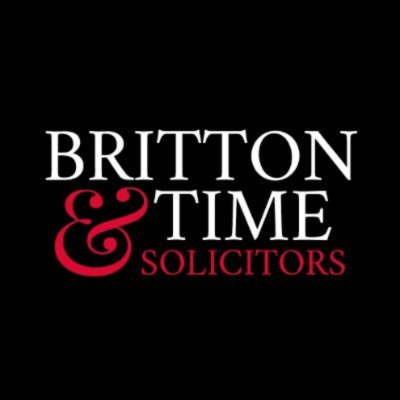Book A Consultation
Understanding Harassment at Work
Workplace harassment is never acceptable, and the law clearly outlines what constitutes harassment at work. The Equality Act 2010 protects employees from unfair treatment, safeguarding them against bullying or harassment based on key characteristics such as age, disability, gender, race, religion, and sexual orientation.
Imagine Sarah, who works in an office where colleagues repeatedly make hurtful comments about her age, creating an uncomfortable environment. Or Tom, whose disability is mocked through inappropriate jokes. These situations are unacceptable and illegal.
Employers must take action to prevent harassment by:
- Creating clear anti-harassment policies
- Training staff about respectful workplace behaviour
- Investigating complaints quickly and thoroughly
- Taking appropriate disciplinary steps
The law requires workplaces to be safe and inclusive. If someone’s behaviour makes you feel intimidated, humiliated, or disrespected, you have the right to speak up. Harassment can include verbal comments, physical actions, or even digital communications that damage your dignity.
If you’re experiencing workplace harassment, don’t suffer in silence. Contact us and submit a lead form, and we’ll match you with expert SRA-regulated solicitors who can help protect your rights.
Key Examples of Workplace Harassment
When harassment occurs, it can destroy your confidence and make work feel like a nightmare. Imagine facing situations where colleagues deliberately undermine your efforts or create a hostile environment. Verbal harassment might involve cruel jokes about your appearance, persistent negative comments, or spreading malicious rumours that damage your reputation.
- Colleagues might mock your background, make inappropriate sexual comments, or use intimidating body language
- Managers could block your career progression deliberately
- Digital platforms can become spaces for cyberbullying through inappropriate messages or online exclusion
Physical intimidation can feel terrifying – being cornered in an office, experiencing aggressive gestures, or feeling threatened during interactions. Sexual harassment ranges from unwelcome advances to inappropriate touching, creating an environment where you feel constantly uncomfortable and unsafe.
If you’re experiencing these challenging situations, submit a lead form, and we’ll match you with an award-winning SRA-regulated solicitors who understand what constitutes harassment at work and can support your rights.
The Impact of Harassment on Employees
Workplace harassment creates a devastating psychological minefield that can crush an individual's professional spirit. Victims often experience profound mental health challenges, with anxiety and depression becoming constant companions. A typical scenario might involve an employee dreading each workday, experiencing panic attacks before meetings, and feeling increasingly isolated.
- Mental health consequences emerge rapidly, including chronic stress and diminished self-confidence
- Productivity plummets as emotional energy is diverted from work tasks to emotional survival
- Team dynamics dissolve, creating a toxic environment where collaboration becomes impossible
Consider a young professional who experiences repeated inappropriate comments. Their performance declines, concentration becomes fragmented, and motivation evaporates. They might start missing deadlines, avoiding team interactions, and experiencing sleep disruptions.
The emotional toll extends beyond individual experiences, potentially destabilising entire workplace cultures. Harassment triggers a destructive cycle where psychological distress undermines professional potential and organisational effectiveness.
If you're experiencing workplace harassment, contact us and submit a lead form. We'll match you with SRA-regulated solicitors specialising in employment law who can provide expert guidance.
How To Report Workplace Harassment
When facing workplace harassment, taking decisive action is crucial to protecting your well-being and professional future. Start by meticulously documenting each incident—record dates, specific comments, and any potential witnesses. For instance, if a colleague repeatedly makes inappropriate remarks, note precisely what was said, when it occurred, and who else was present. This detailed record strengthens your case and ensures you have clear evidence if you decide to escalate the issue.
Your first priority is personal safety. Seek support from trusted colleagues or professional counselling services. Many organisations offer confidential employee assistance programmes that can provide impartial guidance. If you’re looking for additional support, ACAS provides resources to help employees understand their rights and navigate workplace challenges.
Formal reporting requires careful navigation. Follow your company’s harassment procedure precisely. Draft a clear, concise written complaint to HR, outlining specific incidents without emotional language. Include dates, witnesses, and any supporting evidence like emails or messages.
Employer Responsibilities in Preventing Harassment
Effective workplace harassment prevention demands comprehensive strategies that protect employees and maintain professional environments. Employers must create robust systems that proactively address potential risks. By developing clear policies, companies can establish expectations around respectful behaviour, including guidelines about appropriate interactions, communication standards, and consequences for misconduct.
Training plays a crucial role in addressing what constitutes harassment work, with interactive workshops helping employees understand harassment dynamics, recognise inappropriate behaviour, and learn effective reporting mechanisms. For instance, scenarios demonstrating inappropriate workplace interactions can help staff identify subtle forms of harassment.
Key responsibilities include:
- Developing comprehensive anti-harassment policies
- Delivering regular, engaging staff training
- Creating confidential reporting channels
- Investigating complaints swiftly and impartially
- Implementing consistent disciplinary procedures
Crucially, employers must foster a culture of mutual respect, where every employee feels safe and valued. This approach not only prevents harassment but also enhances workplace productivity and morale.
Contact us and submit a lead form – we’ll connect you with expert SRA-regulated solicitors who specialise in workplace harassment support.
The Difference Between Harassment and Bullying
Understanding what constitutes harassment work is essential, as it includes behaviours like a colleague repeatedly making derogatory comments about your cultural background or a manager consistently making inappropriate jokes about your age. These actions are not only harmful but also unlawful under workplace equality laws.
Bullying, however, involves repeated abusive behaviour that isn’t necessarily linked to protected characteristics. Picture a scenario where a team member constantly undermines your work, spreads malicious rumours, or deliberately excludes you from important meetings. These actions create a hostile environment designed to intimidate and diminish your professional standing.
While both scenarios cause significant emotional distress, harassment often carries legal implications related to discrimination. The key distinguishing factor is the motivational intent behind the behaviour.
If you’re experiencing such challenging workplace situations, contact us and submit a lead form. We’ll match you with SRA-regulated solicitors who specialise in workplace harassment cases and can provide expert guidance.
Related Articles

Maternity Pay for the Self-Employed: Explained
Maternity Pay For Self Employed Eligibility Criteria For Maternity Allowance How Much Maternity Pay Can Self-Employed Women Receive How Many Weeks Does Maternity Allowance Cover Is Maternity Pay For Self Employed Taxable How To Apply For Maternity Allowance Using...
Join Our Newsletter
Top Reasons to Choose Voluntary Redundancy
Gaining Financial Benefits From Voluntary Redundancy Opportunity For Career Change Taking Control Of Your Future Creating Work Life Balance Escape From Unsatisfying Roles Book A ConsultationGaining Financial Benefits from Voluntary Redundancy When your company...
How to Document Harassment at Work Legally
Maintain A Detailed Incident Log Collect And Organise Supporting Evidence Why Documenting Minor Incidents Matters Seek Corroboration From Witnesses Book A ConsultationMaintain a Detailed Incident Log When dealing with workplace harassment, your documentation becomes...
Holiday Entitlement While on Maternity Leave
What Is Holiday Entitlement During Maternity Leave? Can Holiday Be Used Instead Of Extending Maternity Leave? Do Public Holidays Count Towards Accrued Entitlement? How To Calculate Holiday Accrual During Maternity Leave When Can Accrued Holiday Be Taken? Carrying Over...
Taking Legal Action for Pregnancy Discrimination
What Is Pregnancy Discrimination At Work Taking Legal Action Against Pregnancy Discrimination Recognising Examples Of Pregnancy Discrimination At Work Steps To Take If You Experience Pregnancy Discrimination How Employers Can Avoid Pregnancy Discrimination Claims Book...









